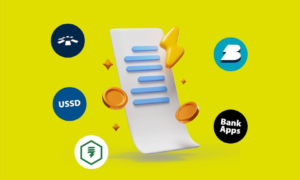Efficient medical billing and coding processes are crucial for healthcare professionals to ensure accurate claims processing and timely reimbursements. Streamlining these tasks can lead to an increase in overall efficiency, minimizing administrative workload, and reducing potential errors. In this blog post, we will explore some top strategies and tools that can help medical billing and coding professionals enhance their workflows and optimize their revenues.
Master the Fundamentals
Before diving into advanced strategies, it is crucial to have a strong foundation in medical billing and coding. This means being proficient in ICD-10 codes which are essential for diagnostic and procedural reporting, current Procedural Terminology (CPT) which consists of a set of codes used to describe medical procedures, and Healthcare Common Procedure Coding System (HCPCS), a collection of codes for products and services not covered by CPT codes.
It’s also important to understand various coding modifiers and their proper application and have overall knowledge of insurance guidelines, including Medicare, Medicaid, and private-payer policies. Having these basics in place will serve as a solid foundation to build upon and make the implementation of efficiency-boosting strategies more effective.
Outsource Non-Critical Tasks
Outsourcing routine, non-critical tasks can alleviate the burden on your staff, allowing them to focus on core competencies and improving billing and coding workflows. By partnering with a reputable medical billing company, you will gain access to their expertise, technology, and experience, helping you streamline processes and reduce errors. Moreover, outsourcing can often lead to significant cost savings and increased scalability.
While outsourcing some tasks, it is essential to keep track of the individual practitioners’ National Provider Identifier (NPI) numbers, which are necessary for submitting accurate claims. An efficient way to search for these NPI numbers is using an NPI Registry Lookup, which will provide the required information quickly and reliably.
Utilize Automation Tools
Technology has come a long way, providing medical billing and coding professionals with various automation tools to support their processes. Some of these tools include Electronic Health Record (EHR) systems that assist with accurate documentation and data storage, automated code checkers that identify incorrect or incomplete codes and suggest corrections, real-time insurance verification tools that validate patient eligibility and plan-specific rules, claim scrubbers that check submitted claims for errors before they are sent to payers, and automated batch submission systems that streamline sending multiple claims at once. By leveraging these tools, professionals can not only save time but also minimize errors and the number of rejected or denied claims.
Continuously Educate Yourself
Code sets, guidelines, and payer policies are constantly evolving. Being proactive in staying informed about the latest updates and industry best practices is critical. Some ways to stay current include becoming a member of professional organizations and societies (such as AAPC or AHIMA) that offer resources and networking opportunities, taking advantage of webinars, seminars, and workshops, subscribing to industry publications and newsletters, and participating in online forums and discussion groups for knowledge-sharing and support.
Continuous education and training will enable you to adapt quickly to the changes and maintain an efficient and accurate billing and coding process.
Maintain Accurate Documentation
Complete and accurate documentation is a vital component of the coding and billing process. Some tips for maintaining excellent clinical documentation practices include using standardized forms and templates, documenting every service provided and supporting diagnoses with appropriate codes, avoiding vague or generic language that may lead to under-coding or over-coding, and ensuring all clinical staff receives proper training on documentation.
Good documentation practices will not only keep your billing and coding processes efficient but also help guard against audits and potential penalties.
Implement a Quality Assurance Process
Regularly conducting internal audits of your coding and billing processes can help you identify potential areas of improvement. Establish a quality assurance process that includes randomly selecting and reviewing a certain percentage of claims, analyzing the results and feedback to identify trends and areas needing improvement, providing ongoing training and support for staff based on the insights gathered, and monitoring key performance indicators (KPIs) related to billing and coding accuracy, denial rates, and days in accounts receivable to gauge progress. An effective QA process will help ensure that your practice maintains optimal billing and coding efficiency, leading to sustained financial success.
Establish Collaboration and Goals
Strong collaboration and communication between clinical, coding, and billing staff ensures that everyone is on the same page. This can reduce misunderstandings and errors, resulting in a smoother workflow. Encourage open communication channels and regular meetings to discuss challenges, share knowledge, and update the team on any changes. Promoting a team-based approach can foster mutual understanding and support, ultimately increasing the efficiency of your practice.
Implementing efficiency-boosting strategies is essential, but equally important is monitoring their effectiveness. Establish measurable goals and key performance indicators (KPIs) to track progress, such as reduced denial rates, increased collections, or decreased days in accounts receivable. Regularly review these metrics and adjust strategies as needed, ultimately driving ongoing improvement and optimization of your medical billing and coding processes.
Conclusion
Maximizing efficiency in medical billing and coding is of utmost importance for healthcare professionals to minimize administrative workload, increase revenues, and improve patient satisfaction. By mastering the fundamentals, maintaining accurate documentation, implementing a quality assurance process, and setting clear goals, you can optimize your billing and coding performance and stay ahead in the ever-evolving healthcare landscape.


































